- News
- Reviews
- Bikes
- Accessories
- Accessories - misc
- Computer mounts
- Bags
- Bar ends
- Bike bags & cases
- Bottle cages
- Bottles
- Cameras
- Car racks
- Child seats
- Computers
- Glasses
- GPS units
- Helmets
- Lights - front
- Lights - rear
- Lights - sets
- Locks
- Mirrors
- Mudguards
- Racks
- Pumps & CO2 inflators
- Puncture kits
- Reflectives
- Smart watches
- Stands and racks
- Trailers
- Clothing
- Components
- Bar tape & grips
- Bottom brackets
- Brake & gear cables
- Brake & STI levers
- Brake pads & spares
- Brakes
- Cassettes & freewheels
- Chains
- Chainsets & chainrings
- Derailleurs - front
- Derailleurs - rear
- Forks
- Gear levers & shifters
- Groupsets
- Handlebars & extensions
- Headsets
- Hubs
- Inner tubes
- Pedals
- Quick releases & skewers
- Saddles
- Seatposts
- Stems
- Wheels
- Tyres
- Health, fitness and nutrition
- Tools and workshop
- Miscellaneous
- Buyers Guides
- Features
- Forum
- Recommends
- Podcast
How to choose the right bike for cycling to work — what's the best bike for commuting duties?

This article includes paid promotion on behalf of Trek
With the current cost of fuel and the omnipresent risk of wasting time sitting in rush hour traffic, you might be considering commuting to work by bike. We’ll presume you’ve already got the job to commute to, so now you need the bike for the job! That can be a bit of a minefield, so with the help of Trek's FX range, here's a look at some typical steeds that are ideal for the commute, and some top tips to get you on your way.
For many of us, with the right preparation commuting by bike is not only pretty easy, but also a more enjoyable and sustainable way to travel to work. It offers numerous benefits for your health and finances, and may even mean you can stay in bed a little bit longer.
Commuting by bike is a great way to get out in the fresh air and maybe even contribute to maintaining your fitness. Another positive of commuting by bike is that you can generally get closer to the office than in a car. There's not many people who like sitting in traffic and trying to find parking spaces in tight town centre car parks, not to mention that parking isn't free for most of us.
The growing network of cycling infrastructure that’s popping up in cities is also making it easier than ever to commute by bike. To help you find the best bike for your commuting duties, we've got our hands on Trek’s FX range. This also happens to be the American brand's best-selling range.
The FX range consists of sporty, lightweight hybrid bikes that can comfortably get you to wherever you want to go. The full range includes the FX 1, FX 2, FX 3, FX Sport and the most advanced, the FX+ 2. Each has three different levels: standard, step-thru or equipped. The bikes come out the box with all the accessories you could ever need.
Even with this simple naming structure for Trek's FX range, choosing the right one might still prove a complex task. So, how do you choose the right commuting bike for you and your needs? Let's look a little closer at each FX bike...
FX+ 2 (£2,125)
At the top of Trek's FX range is the FX+ 2, which is the electric version of their lightweight commuter. This makes it really suitable for longer or hilly commutes.
A commute to work by bike doesn’t need to be tiring, and an e-bike may be the logical choice for many. It means you can kick back on the motor and get to work more efficiently without getting too sweaty, while also saving some energy. Overall, an e-bike can be a more enjoyable experience, particularly on a hillier commute.
Having the helping hand of a motor makes a big difference when you’re stop/starting at traffic lights, as it gets you up to speed quicker and can help you keep up with traffic in rush hour.
Yes, this one is heavier, but it brings all the same versatility as the FX with an integrated rack, mudguards and lights, with the added electric boost to help you use less energy or go a bit faster on your commute to work. You might even be tempted to take the long route home!
The motor is located in the hub of this bike in the rear wheel, and the pedal assist system gives a natural ride feel. It will assist you up to speeds of 25km/h, and you can ride up to 56 kilometres on one charge.
Featuring even wider tyres than the FX 2 and FX 3, the FX+ 2 comes with 40mm tyres, and can fit up to 45mm with mudguards or 50mm without mudguards. This makes it even more capable of coping with riding off the beaten track, or on broken road surfaces.
Overall, this is a very practical commuter that brings all the versatility of the FX 3 disc equipped with the added bonus of being electric, meaning you don’t need to use as much energy!
FX 3 Disc Equipped (£1,100)
Up next is the FX 3 Disc Equipped, which we feel really stands out in the FX range.
As the name suggests, it’s the jack-of-all-trades and comes fully loaded with all the accessories you need for commuting: a pannier rack, lights, mudguards and even a kickstand. This would be the easiest and most practical choice if you want to commute, because it's pretty much ready to go.
Let's start with the mudguards. To make a bike perfect for commuting, many people would argue that mudguards are a non-negotiable, as they protect you from the splash and spray of mud, water and debris and can help to protect your bike, and obviously your clothes. If you have a relatively short commute and are thinking of commuting to work in what you want to wear for the day, then mudguards really are a no-brainer. Also, the lesser talked about part of mudguards is that they can actually reduce your maintenance and lower long-term costs on bike servicing.
A pannier rack is also a great option for those longer commutes where you don’t want to be carrying a backpack, making it easier to transport things to and from work.
The frame itself is lightweight aluminium, with carbon forks and flat handlebars. The bike comes with hydraulic disc brakes, which provide great stopping power in all weather conditions.
It has a simple 1x drivetrain, which means it only has one chainring on the front. Ditching the front derailleur gives you one less thing to think about when you’re riding, and one less component to maintain.
The groupset is Shimano Deore 10-speed with an 11-46 cassette, which means despite only having one chainring on the front, you'll still have all the gears you need to ride up hills, and plenty at the top for riding on flat roads.
Moving on to the wheels, like the FX 1, the FX 3 Disc Equipped features wide tyres which are beneficial to comfort and grip. It comes with 32mm tyres and can fit up to 35mm rubber with mudguards on.
The Bontrager wheels are tubeless-ready, which means they're designed to be used without an inner tube. No one wants a puncture in the morning that’s going to make you late for a meeting, so tubeless tyres really make sense for commuting.
The increased versatility doesn’t come at a cost to the rideability, making this bike a very practical, fully equipped option if you’re thinking more seriously about commuting to work by bike.
FX 2 Disc (£650)
The FX 2 is your entry-level, basic hybrid bike for commuting. It's simple but very adaptable, and nicely priced at £650 to get you going. There's also a standard or step-through design, which some budding commuters might find easier to mount and dismount.
Like the other bikes in the FX range, the frame is aluminium, which means that it’s durable and has natural resistance to corrosion. The frame can handle the stresses and demands of everyday riding, meaning you can bash it around and it’ll be less prone to damage than a carbon fibre equivalent.
The frame is designed for a more upright riding position for enhanced visibility and comfort, with flat handlebars. These bars are a popular choice for many city and urban commuters, offering more comfort and control.
When choosing a bike for commuting, it’s well worth considering tyre width. Wider tyres are beneficial for a range of road surfaces as they can be run at lower pressures, making it more comfortable and providing a wider contact area for more grip. This FX 2 comes with 35mm tyres, and can fit up to 38mm tyres without mudguards which is the sweet spot for many riders.
It’s also nice to see that even at this price point, you can get your hands on hydraulic disc brakes. They require very little servicing and provide excellent stopping power.
Of course, you can also fit those all-important mudguards. This really would make a practical and low-maintenance first-time commuting bike without breaking the bank.
Now obviously, even the cheapest of these bikes represents a fairly sizeable investment. So, what can you do as a commuter before buying?
In the UK there are cycle to work initiatives, which are run through the company you work for. Essentially, there are different vouchers on offer for different values, giving you a pre-tax saving. The money goes out of your monthly pay packet, and you can save anywhere from 20-40% off the price of a bike, which is a great deal.
Hopefully this article has helped you see that commuting by bike can be easy if you have the right bike for your needs and level of fitness.
If you want more information on commuting by bike to work, get in touch with your local bike shop - they’ll often be more than happy to help. If you like the look of any of the bikes that we’ve been riding today, then you can check them out over on the Trek website.
Which of these three bikes is your favourite? Let us know in the comments section below...
Emily is our track and road racing specialist, having represented Great Britain at the World and European Track Championships. With a National Title up her sleeve, Emily has just completed her Master’s in Sports Psychology at Loughborough University where she raced for Elite Development Team, Loughborough Lightning.
Emily is our go-to for all things training and when not riding or racing bikes, you can find her online shopping or booking flights…the rest of the office is now considering painting their nails to see if that’s the secret to going fast…
Latest Comments
- hawkinspeter 1 min 43 sec ago
This is why places like the BBC try to get opinions from youngsters in distress to further their anti-cycling agenda - any criticism of the...
- Secret_squirrel 2 min 3 sec ago
Why the fudge would you employ a CEO who's previous exeperience was in selling a purely digital product, when your business model is selling an...
- hawkinspeter 5 min 26 sec ago
Is that some setting they have on their Whatsapp account? In general I've had no problem attaching files and images to Whatsapp messages and I've...
- mark1a 58 min 39 sec ago
A bit more about it here https://road.cc/content/feature/cycling-tech-innovations-never-took-off-...
- wtjs 1 hour 53 sec ago
The old 'I didn't mean to kill them with my motor vehicle' dodge- never fails!
- hawkinspeter 1 hour 15 min ago
Yeah, I was just looking on Google Maps and it's too old to show others what we're talking about.
- Rendel Harris 1 hour 17 min ago
What a weird illustration of a bike, looks like a time trial Moulton! Perhaps nobody has explained to the drivers what bikes actually look like so...
- David9694 1 hour 18 min ago
HGV lorry lodged underneath bridge following crash https://www.bbc.co.uk/news/articles/cge8zwe4egyo
- Paul J 1 hour 22 min ago
Giro Division - very good. Let's hope this giro isn't marred by crashes, don't want to see any riders lose control again.
- brooksby 1 hour 56 min ago
Problem is that if they gave buses their own pot of the budget, you are effectively subsidising the companies which run them so why aren't you...
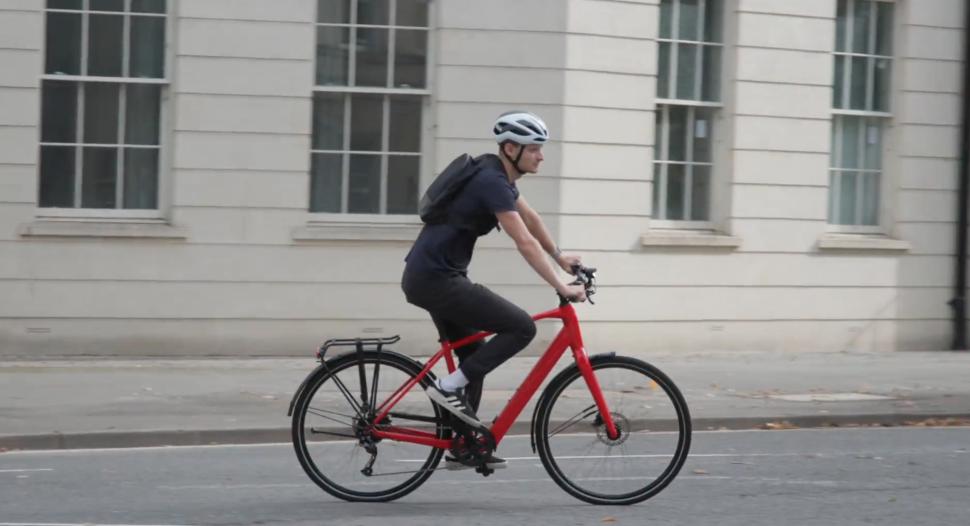
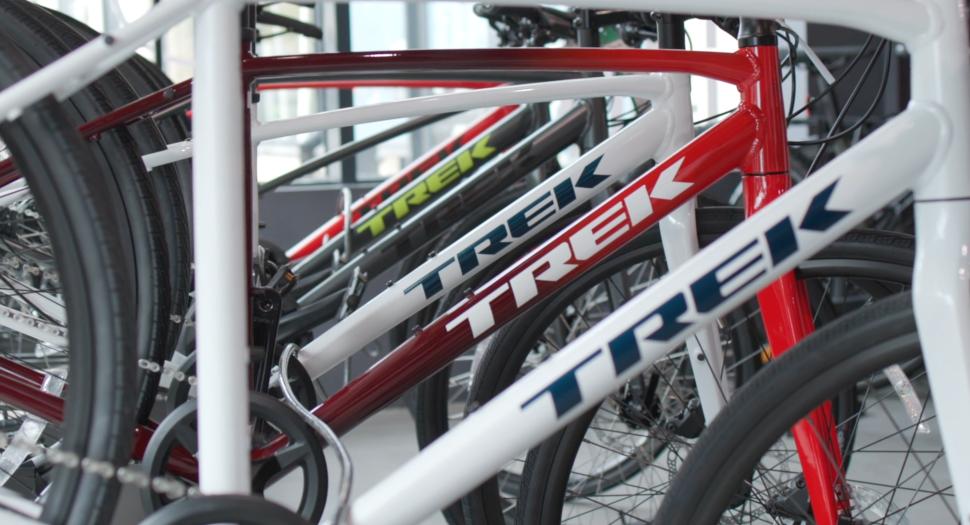

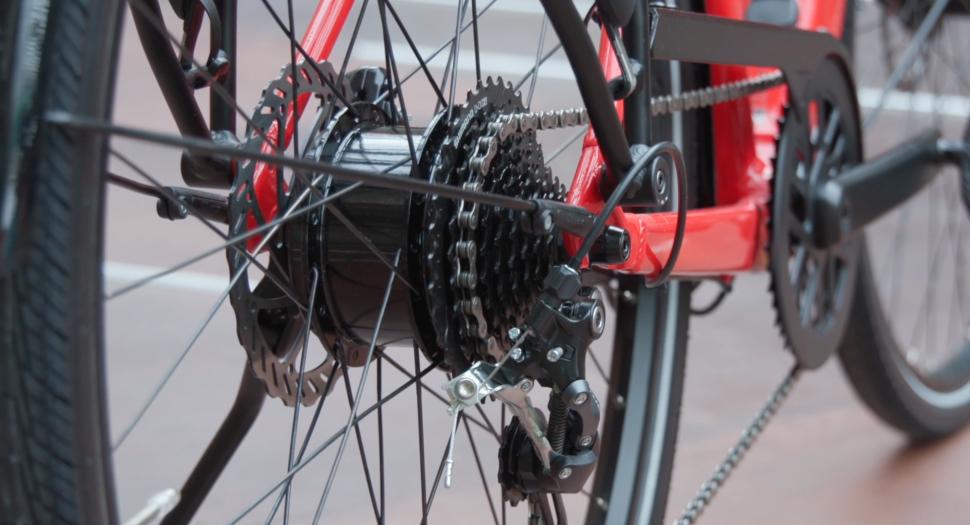
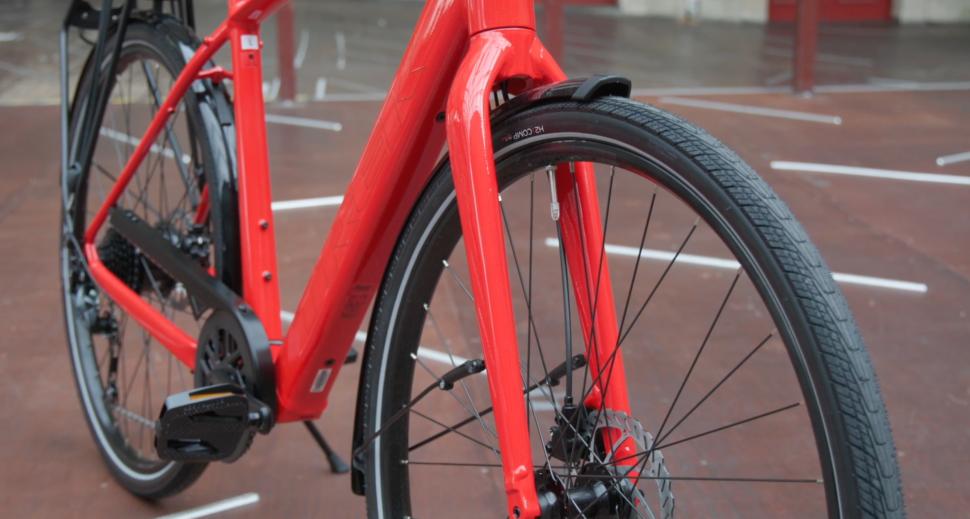

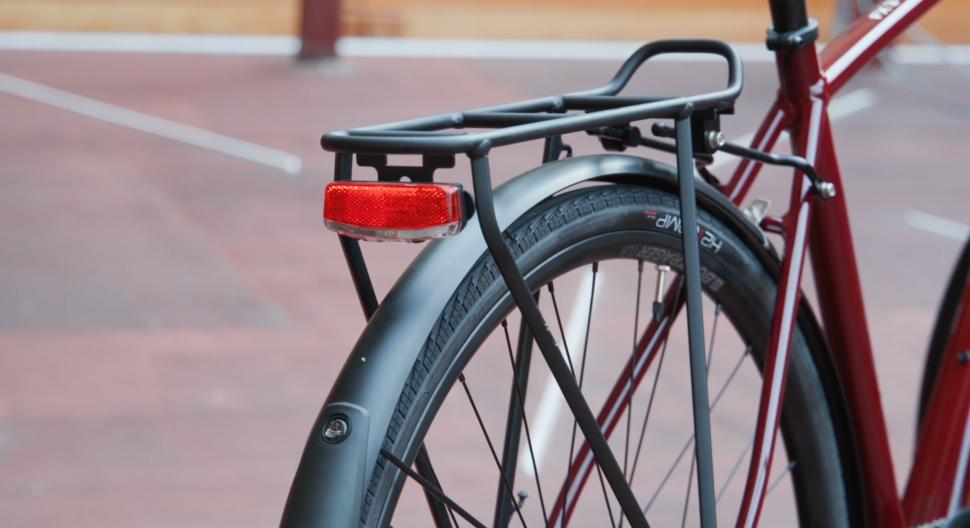

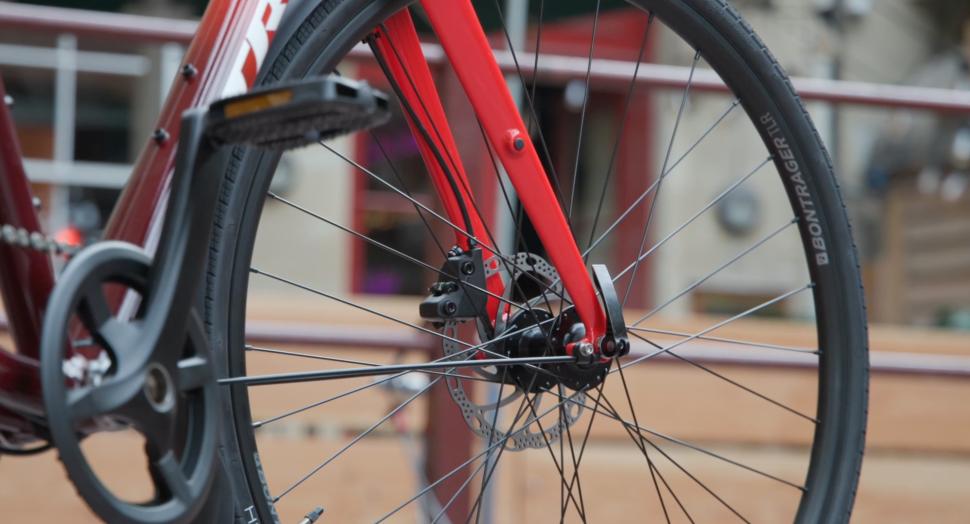
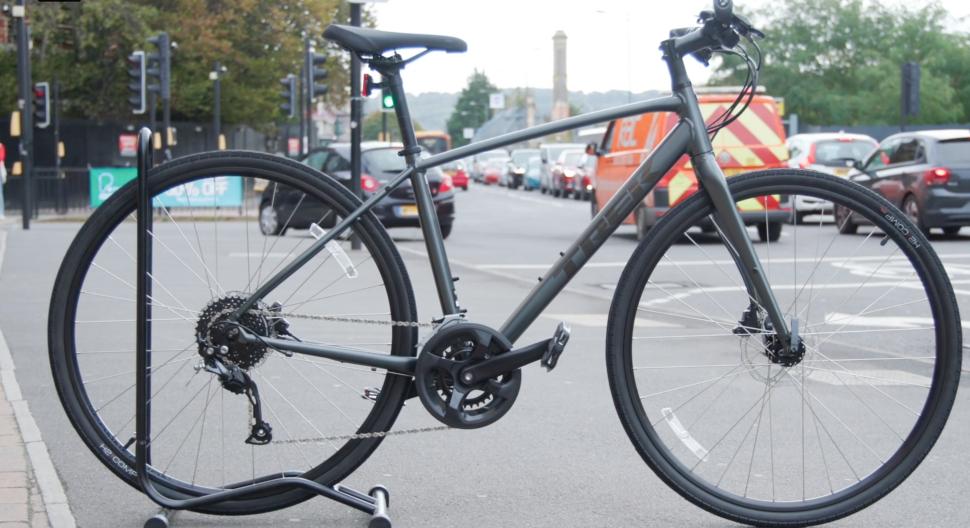


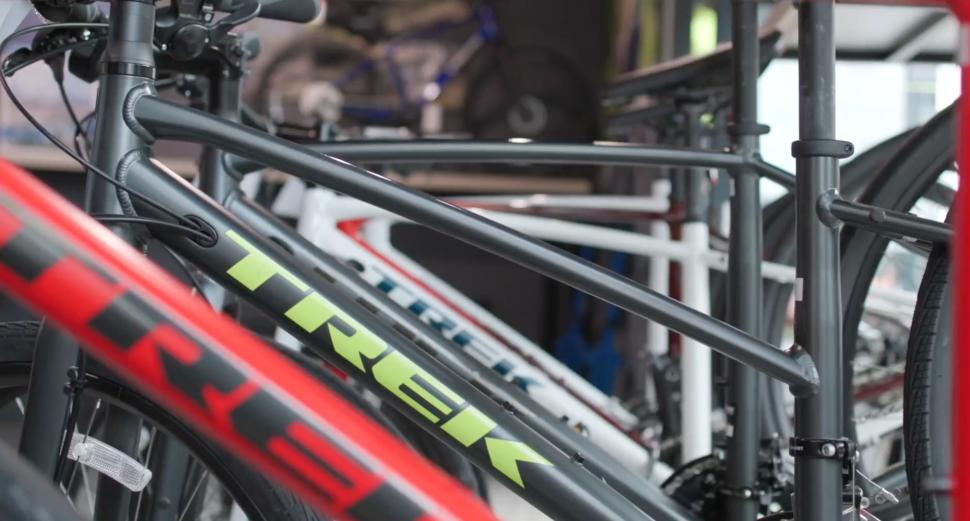

Add new comment
15 comments
I bought a Trek District 4 Equipped this year. It has a belt drive, Alfine 8 speed internal hub, hydraulic disc brakes, mudguards, a rear rack, and most importantly nice bright generator powered lights at both ends. I feel it's a much more practical commuter than anything shown here.
I did lop off over two inches (5 cm) from each end of the bar, though. It was stupidly wide for a commuter.
I was looking to get the FX2 purely because of the discs to cut the hassle of dealing with rim brakes in winter.
I'd have said mudguards are a must for an all round UK climate style bike, not a nice to have addition, so forget about the 38 tyres, and I think puncture protection ranks more highly than total comfort too.
I have a Trek fx2 disc. Great bike, really like it. I wouldn't call it lightweight though.
All good with the article (maybe stress more the importance of good lights), but flat bars is all wrong to me unless it is a difficult off road path. Apart from them being much less comfortable compared with drop/bullhorn bars, in roads shared with cars, they have a huge disadvantage, as they are significantly wider, creating additional risk of collision.
Their only advantage is their reduced cost compared with brifters, but economies of scale also may apply, as flat bars rule the global bike market.
This is just nonsense. I don't actually own any flat bar bikes at the moment but I've had lots for both commuting and touring and they are unquestionably easier on the back and wrists than drop bars. They are also easier to control in most situations. The flat bars on the FX here are 600 mm wide compared to 420 mm for the drop bars on a Domane, so 90 mm wider on each side, not what I would call a "huge disadvantage" unless you are regularly missing collisions by less than 9 cm, in which case you might want to have a look at your roadcraft. Additionally when you're on the hoods for braking on a drop bar bike your hands are outside the width of the bars, unlike with a flat bar, so you probably add an extra 60-70 mm to your width each side anyway. Saying that flat bars are much less comfortable than drops and have a huge disadvantage because they create an additional risk of collision is simply wrong.
A synthesis of this flat bar thesis and antithesis is required!
Personally I've had half a dozen flat-bar bikes over the decades, 4 of which needed the ridiculously wide bars shortened to be both comfortable and less likely to catch on every bluddy thing they got near - when used on roads.
So shorter flat bars seem appropriate for in-traffic commuter bikes that don't need a large riving-couple to suddenly steer clear of boulders, ruts and fallen trees, as with an MTB.
Flat bars do tend to have only one position in which the hands and wrists must remain, which certainly makes my hands and wrists ache over anything more than 5 miles. If they offer other advantages then those who find the single position of flat bars irksome can add some bar-ends or other extensions to enable a change of hand position to alleviate hand/wrist aches, as I have with one ex-MTB set up for the road.
In practice, drop bars can be got in all sorts of shapes, with many different angles of the parts, thicknesses of the bar and so forth. They can even emulate (narrow) flat bars if you add "sissy" brake levers to the bar tops, as I have on one cyclo-cross bike. On the other hand, I haven't used the drop part of drop bars when riding, for years, other than as a means to mount bar-end mirrors.
The degree of one's forward lean is easily altered with stem angles & lengths and/or spacers on the steering column tops. Nothing about flat bars automatically makes you sit up more on the bike, as forward lean is due to all sorts of other factors besides the bar shape.
At bottom, it comes down to the usual, though. Different bar shapes suit different requirements of people with various bodily configurations and tolerances. As I get older and stiffer, some of my handlebars look far from those positions and configs specified by The Rules or other silly fashion styles for bike configs referenced by faux racers and similar fashion victims.
************
Here's an interesting article that tends to the Rendel view. What do others think?
https://www.cyclingabout.com/flat-bars-are-objectively-better-than-drops/
You mean, like these...?
Interesting, I prefer flat bar for a commuter/hybrid bike because you tend to sit more upright on those bikes, which I feel at least gives me a better overall view of the traffic situation.
Width doesn't make the difference, I'm running with panniers, if the handlebars won't fit a gap, the pannier certainly won't because it sits wider, something I often forget when filtering.
Regarding flat bars being easier on back and wrists, you may make an unfair comparison. Dropbar bikes may seem hard on back and wrists, but it is because the unreasonably great majority of them have a too low riding position. I have ridden two flat bar bikes converted to drop before and after (with shorter stems) and the result was very pleasurable. It is just the industry that hasn't understood it yet.
About width, actually in my size bar width is 660mm in Trek FX https://www.trekbikes.com/gb/en_GB/bikes/hybrid-bikes/fitness-bikes/fx/f...
compared to my drop bars 44c-c+2*1cm the two bar radius + 2*~3cm per hand=52cm total width so a 66cm handlebar (maybe the grip covers add 1cm or two) will mean more than 20% increase in width. Imagine a bike now that is 10kg and another is 12kg. It is quite important, and I actively felt it when in heavy traffic (that in general I avoid).
I started commuting on a cheap flat bar, then replaced it with a less cheap (although still <£500) drop bar. The two bikes were very different and I far prefer the drop bar.
Comfort - I am happy on either, but I can see how a flat bar would be easier to get into a comfortable position than a drop bar, however, your forearms are twisted when using a flat bar, as opposed to a drop bar (think about how ergonomic keyboard/mice try to move your hand away from the flat position.)
I normally rest my hands on the hoods with my drop bar and don't feel like I can perform emergency braking quite as quickly as I could on the flat. With the drop bar, it feels like I need to extend my fingers and rotate my hand slightly to properly grip the brake lever. This could well be because of how I have set up my bike!
Out of interest I've just measured how far my hand protrudes from the hood of my main road bike, at its widest point (the knuckle of the little finger) it's actually sticking out 60 mm from the bar width, meaning that there would effectively be no width difference between a 440 mm drop bar and a 660 mm flat bar. Even if there were 20 or 30 mm, do you frequently miss crashes by 20 mm on your drop bar bikes, frequently enough to claim that a negligible width difference (in my case none at all, as I say) is enough to offer a "huge disadvantage" in safety?
This seems weird, my whole little finger is 6cm, I don't really know how you measured this. If you try to spread your body, you may have a bike width up to 2m. But usually when you find two cars who decided to move closer and you are coming from behind at speed, every cm matters, so you will try to squeeze as usually elbows may extrude even more.
Couldn't hold a tape measure at the same time but you get the idea…all of my fingers are on the brake lever, you can see how much further out my hand is than the bar width. As with nearly every road bike, the levers are turned slightly inwards and are at a slight angle so the lowest part of my hand, the bottom knuckle of my little finger, sticks out most.
Incidentally unless you're a total stick insect your hips will be considerably wider than 44 cm so if a car is coming as close as you describe from behind it's going to hit your hip/thigh before it hits your bars anyway.
For year-round commuting in rainy Glasgow I went with a BMC with hub gears, belt-drive and hydraulic discs. I've since added dynamo lighting.
I've since bought a folding eBike from Decathlon for working away from home - it's easy to fold into the boot of the car, or take on a train or tram and comes with integrated lights that run off the battery. But it has a derailleur, a chain and rim brakes which means it needs a little more maintenance to get through Glasgow winter so it hasn't replaced my regular commuter.
Next time I reckon I'll get a folding eBike with hub gears, belt-drive, hydraulic discs & integrated lights. Kinetics in Glasgow will build me a Brompton to that spec but the cost is pretty scary.